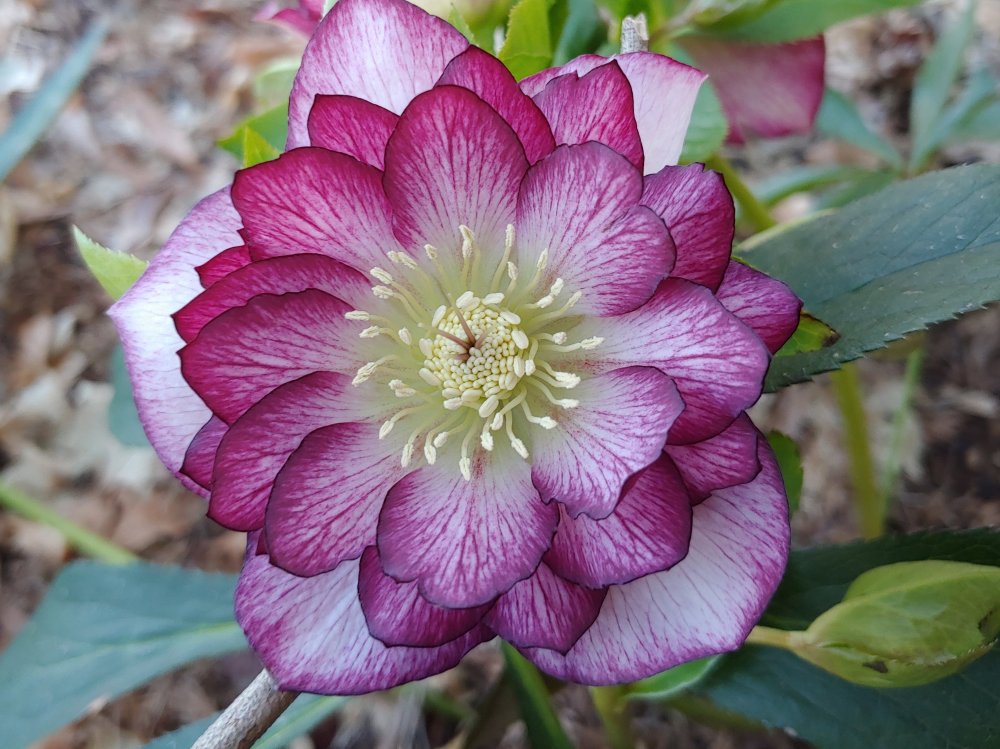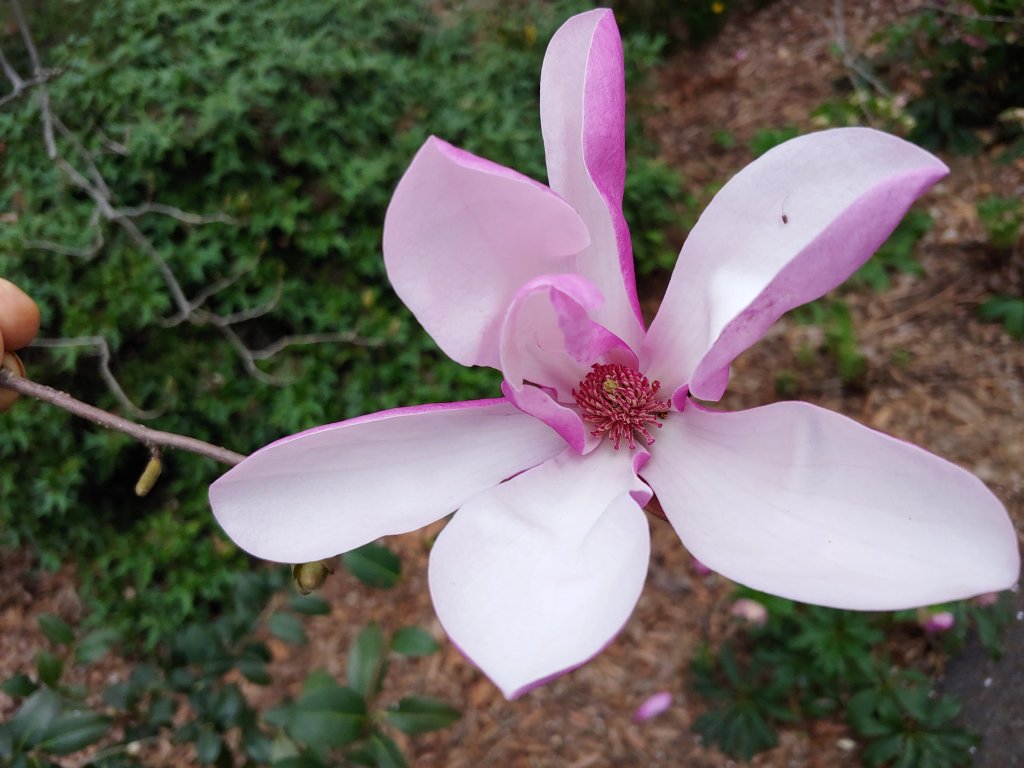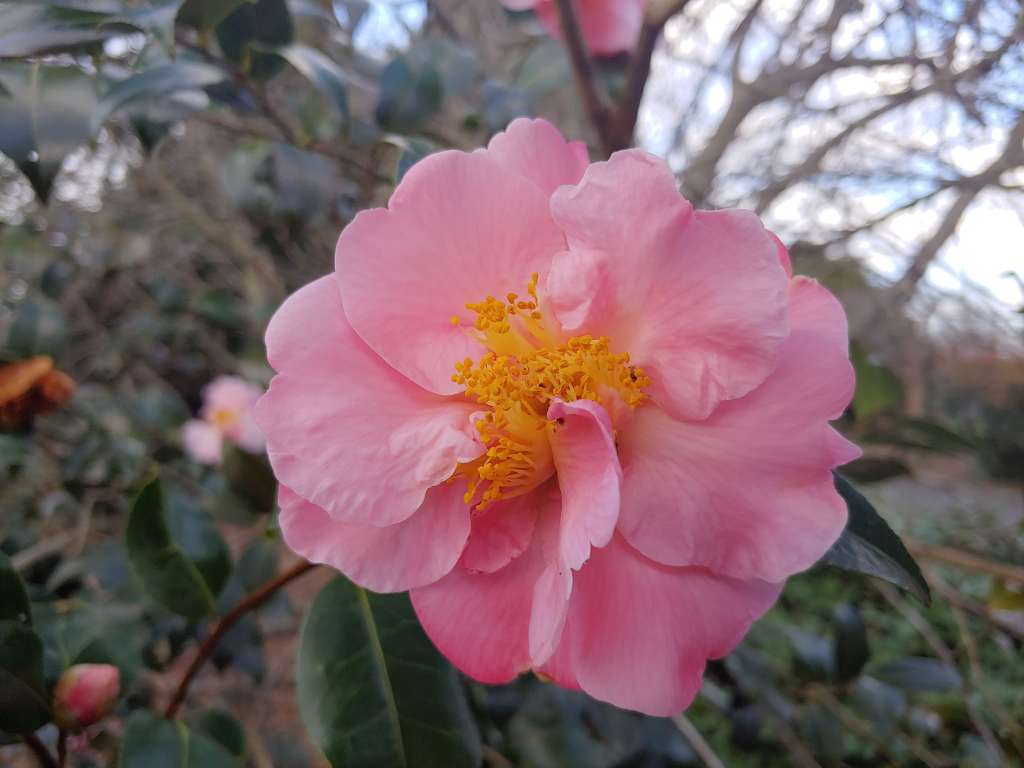The vagaries of early spring weather occasionally bring together the flowering of all of the garden’s magnolias that more regularly bloom weeks apart, as well as other flowers holding over from late winter along with early spring bloomers. In this last week of March the winter flowering witch hazels (Hamamelis x intermedia) have faded with the first warm days, but most of the many dozens of hellebores (below) remain in flower, adding to this somewhat unusual riot of color.



Several autumn flowering camellias (above) that are slow to bloom in the shade of ‘Jane’ magnolia and a Goldenrain tree (Koelreuteria paniculata) are now in full bloom, the first time in memory with this abundance of March blooms since unopened buds are most often ruined by repeated winter freezes. On the far side of the garden, flowering of spring bloomers (Camellia japonica, below) is also the best that I recall since buds were not damaged with the absence of severe cold (even while the shrub is dependably cold hardy).

The daphnes (Daphne x transatlantica ‘Eternal Fragrance’, below) are beginning to flower, though not early, and perhaps a week later than in recent years. After a very mild winter, and presumably a warm March, it does no good to try to make sense of why one flower is early and another late. It just is, so enjoy whenever the blooms arrive. I am overjoyed by this somewhat unusual combination of early spring flowers, no matter the timing.

Beautiful shots, nice job of the photography.
Thanks for your posts. They are most welcome in this time of uncertainty. My garden needs tending, but first I will look at the lovely photos from your garden.Nancy BleilSilver Spring, MD
Not everyone is so fortunate to have an acre of plants, many blooming now, so I am obligated to share as often as I can figure something to write about between photos.
Oh, I am missing my camellias already. They have not even been gone all that long. Perhaps I miss them because I did not work with them much this year.
For years I was unimpressed by how camellias performed here, but with recent mild winters the spring flowering has improved. Now I’m happy to have them.
Where they available there, or did you need to order them from somewhere else? If available there, they should perform at least somewhat there. (But of course, I saw bougainvillea in Portland.)
Camellias are grown in Virginia, but the southeastern tip of the state is considerably warmer than in the north. We’re not far from Washington DC where many camellias were introduced by the National Arboretum. Again, it is ten degrees warmer in the winter, so we can have damage to buds in a typical winter. This winter was not typical, so lots of flowers.
It is surprising where they can end up.